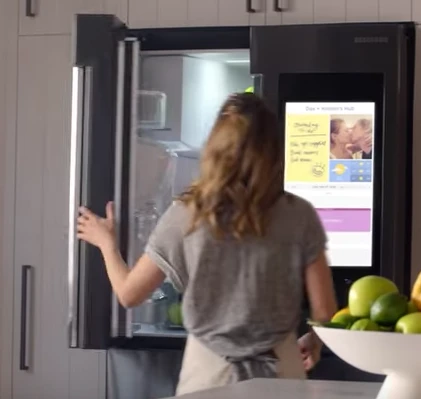The Era of the Smart Machine is Upon Us
by Jillian MacNulty | Last Updated: Aug 30, 2016
by Jillian MacNulty | Last Updated: Aug 30, 2016
One of my favorite commercials on TV at the moment is the one where Hollywood power couple Dax Shepard and Kristen Bell, through a series of birthday party-related crises, show off their “smart fridge”. Yes, you read that right.
The “smart fridge” does it all, from wirelessly sending a picture of its contents to Dax’s smart phone as he’s running errands to displaying a hand-written message from Dax’s phone on its large fridge-front screen.

Full disclosure: I never thought I would need a fridge that had more capabilities than simply keeping my groceries cold, but after seeing this commercial I’m fairly certain it’s a necessity.
If you, like me, think the idea of this “smart fridge” seems a little futuristic…then consider us on the fast track to the future. Technological advances are allowing for huge strides toward “smart” machinery taking over the market. But what’s the driving force behind it? Enter: the Internet of Things (IoT).
What is this IoT business?
Put simply, IoT refers to the ability of machines to talk with each other, their users, and makers. In other words, IoT enables us to bring web connectivity to everyday products—anything from household items like Dax and Kristen’s “smart fridge” to heavy machinery out in the field.
Implementation of IoT runs the gamut; At its most basic level, it could mean simply tagging product packaging with a scannable code that opens a mobile-friendly webpage. Or, as a more advanced example, a smart phone wirelessly sending messages to the “smart fridge”.
In any case, an IoT-enabled device doesn’t have to be physically connected to the Internet. Instead, it can simply use an Auto-ID technology (like the smart label on a package), short-range radio (like Bluetooth) or a local Wi-Fi connection.
What’s driving this
The short answer: evolving user behavior.
As our screen addiction and appetite for web connectivity grows, users increasingly shun products that fail to merge their physical and virtual needs. Instead, they demand immediate, easy-to-access information at their (literal) fingertips from the moment of need, throughout the life of the device — especially when something goes haywire and they’re forced to troubleshoot, upgrade, or buy a new part. Fail to provide that über-connected experience and they’ll jump ship to a competitor faster than you can say “IoT.”
The long answer is that IoT also solves problems in numerous aspects of the user experience in all facets of the manufacturing business. Surveyed industry leaders who are now investing (or planning to invest) in IoT report the following benefits:
Industry Prognosis
With benefits like these, it’s no wonder we’re beginning to see IoT innovations being integrated into everyday products like the “smart fridge”. But home appliances are just the beginning. KPMG, a global professional firm, warns that competition for market share is about to get brutal, and manufacturers’ survival will hinge squarely on technology innovations if they stand any chance of reaping benefits listed above.